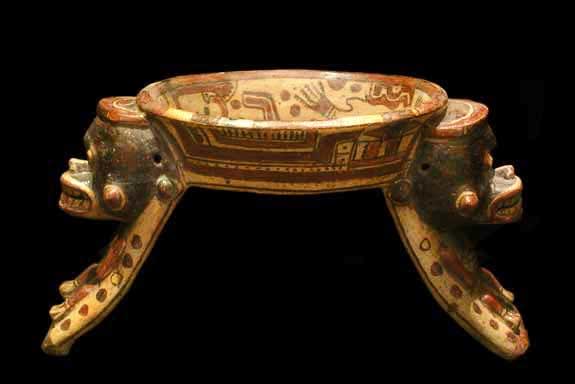Double Effigy Vessel, 1350 CE - 1500 CE
Terracotta
13.25
PF.4629
Further images
The artists who created the remarkable ceramics of Ancient Costa Rica had a great fondness for mythological characters. Zoomorphic effigies provided a perfect subject matter for a people who believed...
The artists who created the remarkable ceramics of Ancient Costa Rica had a great fondness for mythological characters. Zoomorphic effigies provided a perfect subject matter for a people who believed the human and animal realms were connected on a spiritual plane. According to tradition, a shaman who was capable of assuming the shape of a jaguar, alligator or eagle for ritualistic purposes could cross this invisible barrier. This fantastic world of myth and magic can be seen in this exciting vessel. The two figures on the legs serve not only as decoration, but are perhaps shamans in the act of transformation. Given the extraordinarily elaborate decoration on the bowl's interior, it is possible the entire vessel represents a ritual ceremony. The symbols are not so much design, as a script describing metaphysical aspects of shamanic practice. It can be speculated with some certainty that the people who either purchased the vessel understood these beautiful symbols or had it commissioned. If used as part of funerary furniture it's meaning may be connected with rites pertaining to the underworld. What is equally amazing as the vessel itself is the power it continues to exude, which attests to the artistry and intent of a talented artist.





